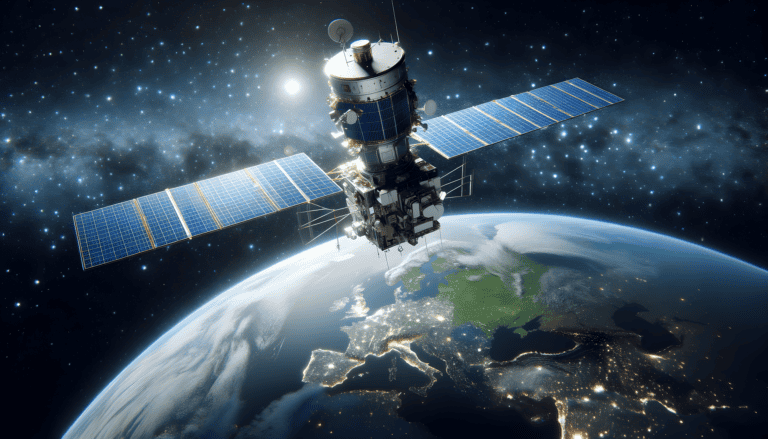Researchers from Princeton University and Yang Ming Chiao Tung University in Taiwan have developed a new technique that could significantly reduce the number of low-orbit satellites needed for global communication networks. This breakthrough, described in a paper titled “Physical Beam Sharing for Communications with Multiple Low Earth Orbit Satellites,” enables satellite antennas to handle multiple users simultaneously, overcoming a major limitation that previously required either large numbers of satellites or more complex, costly systems.
Currently, low-Earth orbit (LEO) satellites can only manage one user at a time per antenna array, forcing companies like SpaceX to launch vast constellations of satellites to cover large areas. SpaceX’s Starlink network, for example, already consists of over 6,000 satellites, with plans to add tens of thousands more in the coming years. The need for more satellites to handle global communications raises concerns about overcrowding in space, which increases the risk of collisions and space debris.
The new technique, however, splits transmissions from a single antenna array into multiple beams, allowing LEO satellites to serve several users at once without additional hardware. As a result, fewer satellites could be launched to cover the same area. According to co-author Shang-Ho Tsai from Yang Ming Chiao Tung University, this innovation could reduce the number of satellites needed to cover the United States from 70-80 down to as few as 16.
This advance also holds significant potential to alleviate space congestion. With fewer satellites required to deliver global coverage, the risk of overcrowding in low-Earth orbit and the associated dangers of space debris are reduced. This breakthrough comes at a crucial time, as major companies like Amazon and OneWeb are rapidly deploying satellite constellations to expand global internet services.
While the research is theoretical, co-author H. Vincent Poor of Princeton University emphasized the real-world potential of the findings, noting that the technique could be incorporated into existing satellites. The next step for the team is to implement this system in a satellite and test it in space. Field tests using underground antennas have already shown that the math behind the breakthrough works, offering a promising future for more efficient and less costly satellite communication networks.
References
Alaina, TechXplore, 2024, ‘New method could decrease number of satellites needed for global coverage’, Northwestern, viewed 17th September 2024, <https://techxplore.com/news/2024-09-method-decrease-satellites-global-coverage.html>
























